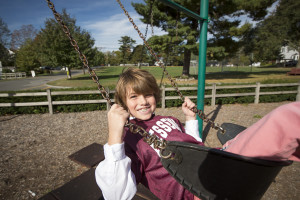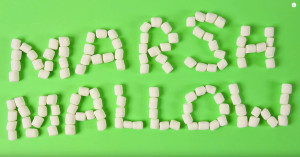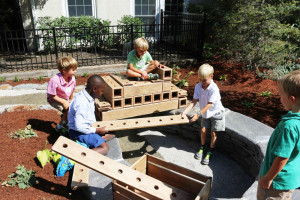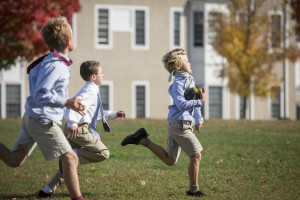
For most adults (unless we’re very lucky), “work” and “play” tend to be separate pursuits. We work at a job. We play with our children. But as psychologist Jean Piaget notes, “Play is the work of childhood.” Mr. Rogers elaborated: “Play is often talked about as if it were a relief from serious learning. But for children, play is serious learning.”
Whether we view play and work as “serious learning” or “serious fun,” research shows that play has numerous educational benefits for children–even babies. Simple toys like balls and blocks can help young children practice fine motor skills, problem-solve, and use their imaginations. Simple make-believe games offer children the chance to negotiate social situations and practice conflict resolution. And independent creative play gives children the opportunity to develop confidence.
 In a school setting, structured, creative play can be informative and fun. Basic instruction, reinforced with “play” that incorporates multiple learning modes (auditory, visual, kinesthetic), can help children retain concepts. A Pre-K class, for example, might learn about the letter “M” by building an “M” out of mini-marshmallows. They may brainstorm other things that start with “M” (“‘Mom’ starts with ‘M!’ And my mom’s name is ‘Melissa’–another ‘M!’”) By exercising restraint to not eat the marshmallows as they build, they may earn the chance to have a marshmallow treat later on. Areas of the class may be set up around an “M” theme, reinforcing learning with visuals, sounds, and activities. While simple and fun, this “lesson” introduces fundamental literacy skills (letter sounds, shapes, and examples) upon which young children will build as they become readers and writers.
In a school setting, structured, creative play can be informative and fun. Basic instruction, reinforced with “play” that incorporates multiple learning modes (auditory, visual, kinesthetic), can help children retain concepts. A Pre-K class, for example, might learn about the letter “M” by building an “M” out of mini-marshmallows. They may brainstorm other things that start with “M” (“‘Mom’ starts with ‘M!’ And my mom’s name is ‘Melissa’–another ‘M!’”) By exercising restraint to not eat the marshmallows as they build, they may earn the chance to have a marshmallow treat later on. Areas of the class may be set up around an “M” theme, reinforcing learning with visuals, sounds, and activities. While simple and fun, this “lesson” introduces fundamental literacy skills (letter sounds, shapes, and examples) upon which young children will build as they become readers and writers.
Research supports this approach. Consider the following:
Exploration boost creativity.
This article from the National Association for the Education of Young Children (NAEYC) profiles the work of educational researcher Paul Tullis. In 2011, Tullis reviewed a pair of studies that compared children’s behavior when provided with direct instruction on how to activate a new toy, and when allowed to explore the toy without specific instruction. While both groups learned the intended use of the toy, the children in the exploration group found additional creative uses for the toy or its pieces. Study authors concluded the exploration group showed creativity and problem-solving skills they otherwise wouldn’t have in the direct-instruction condition. This is valuable insight for parents and teachers seeking to prepare students for a world that asks them to be intelligent and creative–to apply knowledge to real-life problems not found on a test.
Pretend play boosts social skills.
 From Dr. Alison Gopnik, professor of psychology at UC Berkeley and noted leader in the study of children’s learning and development: “When children engage in pretend play, have imaginary friends, or explore alternative worlds, they are learning what people are like, how people think, and the kinds of things people can do. This helps children learn to understand themselves and other people. We also have evidence that this kind of understanding leads to social adjustment in school and social competence in life.”
From Dr. Alison Gopnik, professor of psychology at UC Berkeley and noted leader in the study of children’s learning and development: “When children engage in pretend play, have imaginary friends, or explore alternative worlds, they are learning what people are like, how people think, and the kinds of things people can do. This helps children learn to understand themselves and other people. We also have evidence that this kind of understanding leads to social adjustment in school and social competence in life.”
Social skills may predict academic performance.
Jaak Panksepp, a researcher at Washington State University, studied play and learning in rats. He found that play activates the entire neocortex of the brain–the area involved in higher functions such as sensory perception, generation of motor commands, spatial reasoning, conscious thought, and, in humans, language. Of the 1,200 genes Panksepp measured, about one-third of them were significantly changed by having a half-hour of play (see source).
And Sergio Pellis, a researcher at the University of Lethbridge in Alberta, Canada, believes play may affect human brains in a similar manner. In fact, Pellis cites one study in which researchers found that the best predictor of academic performance in eighth grade was a child’s social skills in third grade.
Recess complements classroom learning.
While discrete curriculum objectives can be achieved through play and exploration, it’s also beneficial for students to have time designated solely for play–such as recess. This unstructured time can complement learning objectives in the classroom and support students’ cognitive, social-emotional, and physical development, says Dr. Olga Jarrett, of Georgia State University.

Both the Center for Disease Control and Prevention and the American Academy of Pediatrics recommend that children have 60 minutes of physical activity a day. Playing games in an open setting allows children to engage in creative play, negotiate moral dilemmas, and (unlike in the “closed setting” of the classroom) withdraw from a game if they so choose. Jarrett also cites research that indicates children perform better on literacy tasks after they have had recess, and that children raise their hands more often after recess breaks (see full citations below).
The research on play in learning is vast, and the topic is far from exhausted. Play has benefits for a child’s intellect as well as his emotional, social, and physical development–and, at the very least, should be a part of the curriculum for any school seeking to promote development of the whole child.
Additional research and reading:
“A Conversation with Dr. Alison Gopnik,” Teaching Young Children, Vol. 3, Number 2, Dec. 2009/Jan. 2010, http://www.naeyc.org/files/tyc/file/TYC_V3N2_Gopnik.pdf
Hamilton, Jon. “Scientists Say Child’s Play Helps Build a Better Brain,” NPR, Aug. 6, 2014.
National Association for the Education of Young Children (NAEYC), “Play and Children’s Learning,”






I’m glad that you mentioned that playing together with other kids would be an important part of kids developing social skills. I would want my kids to be able to work well with anyone they come across, so if playing with other kids at a young age could help with that, then that sounds like a good idea. I’ll have to make sure to let my kids have time to play with other kids so they could further their development.